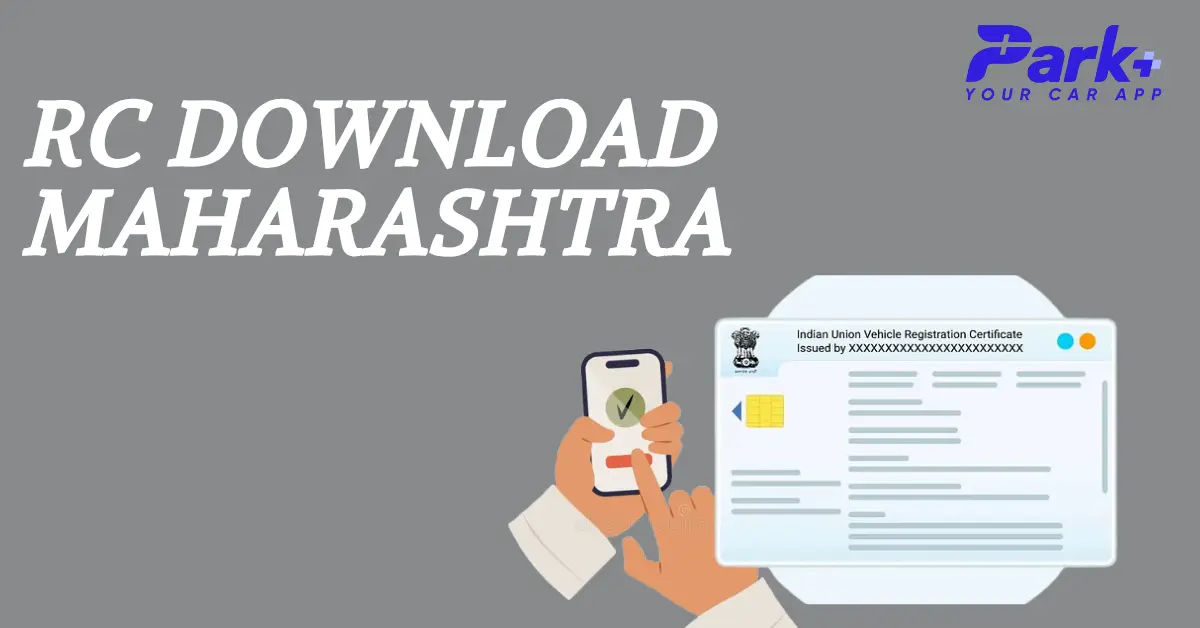RTO Office in Navsari
Check Vehicle Details
Find Nearest RTO Office
Find RTO Office by State
Check RTO details state wise

RTO Telangana

RTO Andhra Pradesh

RTO Arunachal Pradesh

RTO Karnataka

RTO Madhya Pradesh

RTO Nagaland

RTO Mizoram

RTO West Bengal

RTO Tripura

RTO Maharashtra

RTO Kerala

RTO Meghalaya

RTO Punjab

RTO Haryana

RTO Himachal Pradesh

RTO Odisha

RTO Manipur

RTO Tamil Nadu

RTO Uttar Pradesh

RTO Gujarat

RTO Goa

RTO Jammu & Kashmir

RTO Jharkhand

RTO Sikkim

RTO Chhattisgarh

RTO Delhi

RTO Uttarakhand

RTO Bihar
Navsari RTO is implementing and enforcing various laws and regulations related to transportation in the Navsari district of Gujarat, India. GJ-21 is the Navsari RTO code.
The Navsari RTO office is located near Sisodra (for directions click here). Previously, the old office was in Italva, which is now closed. For any vehicle-related process, this is the only RTO office in Navsari. One can access GJ 21 Navsari RTO?s online services by visiting the official website and checking the services tab.
Functions of Navsari RTO
The primary function of the Navsari RTO is to implement various provisions under the Motor Vehicles Act, of 1988, and other related rules and regulations. The key functions of the Navsari RTO are:
Navsari RTO is responsible for the registration of motor vehicles such as cars, two-wheelers, buses, trucks, etc., which includes issuing new vehicle registration certificates, renewing registration certificates, and issuing fitness certificates.
RTO Navsari collects various taxes related to motor vehicles, such as road tax, green tax, and other relevant taxes.
It issues driving licenses to eligible applicants after conducting driving tests and ensuring that the applicant meets all the essential requirements.
RTO Navsari ensures compliance with traffic rules and regulations by conducting regular checks, issuing challans, and penalizing offenders.
It issues permits for commercial vehicles such as taxis, buses, trucks, and other heavy-duty vehicles.
It conducts regular vehicle inspections to ensure that all vehicles comply with the relevant safety and emission standards.
RTO Navsari plays a crucial role in regulating the use of motor vehicles on the roads and ensuring public safety.
How to Register a Vehicle at Navsari RTO
Vehicles in Navsari should be registered under the Navsari RTO if the owner belongs to or lives in Navsari. After registration, the car is eligible to run on the road. One should follow these steps to register their cars under the Navsari RTO (Code: GJ 21 RTO):
One should first visit RTO Navsari and obtain Form 20 (Application for Registration of a Motor Vehicle) from the RTO counter.
Then they should fill out Form 20 with the necessary details, such as the vehicle owner's name, address, chassis number, engine number, vehicle model, and colour.
After filling out Form 20, they should attach the necessary documents, such as a valid insurance certificate, a pollution under control (PUC) certificate, identity proof, address proof, and the vehicle purchase invoice.
Once the application has been filled out and the necessary documents submitted, the Navsari RTO will conduct a physical inspection of the vehicle to verify its details.
The required registration fees should be paid at the RTO. The fee depends on the type and model of the vehicle.
After successful payment of the fees, one will finally receive the registration certificate for the vehicle.
It is important to note that the registration process should be completed within seven days of purchasing the vehicle. In the event of any delay, additional fees might be charged.
How to Renew Registration for a Vehicle at Navsari RTO
Any private vehicle needs to be renewed after 15 years. The steps to renew registration for a vehicle are as follows:
One should collect Form 25 (Application for Renewal of Certificate of Registration) from the RTO counter.
Then Form 25 must be filled with the necessary details, such as the vehicle owner's name, address, registration number, chassis number, engine number, and registration date.
Attaching the necessary documents, such as a valid insurance certificate, a pollution under control (PUC) certificate, and the original registration certificate.
Submitting the filled-out application with the necessary documents. The Navsari RTO will then conduct a physical inspection of the vehicle to verify its details.
Paying the required registration renewal fees at the RTO. The fees will depend on the type and model of the vehicle.
After successful payment of the fees, the owner will receive an updated registration certificate for their vehicle. The registration certificate is proof that their vehicle is legally registered with the Navsari RTO for the next five years.
It is important to note that one should renew their vehicle's registration before the expiration date mentioned on the registration certificate.
How to Transfer Vehicle Ownership at Navsari RTO
A vehicle ownership transfer is needed when reselling the vehicle. Importantly, one should finish the ownership transfer process within 14 days of selling the vehicle to avoid any penalties. The steps for transferring ownership of a vehicle are as follows:
Visiting the Navsari RTO office and obtaining Form 29 (Notice of Transfer of Ownership of a Motor Vehicle) and Form 30 (Application for Transfer of Ownership of a Motor Vehicle) from the RTO counter.
Then Form 29 and Form 30 must be filled with the necessary details, such as the name and address of the buyer and seller, the vehicle registration number, and the chassis number.
If the vehicle is registered in another RTO's jurisdiction, one will need to obtain a NOC from the original RTO.
Submitting the filled-in Form 29 and Form 30, along with the original registration certificate, insurance certificate, pollution under control (PUC) certificate, and NOC (if applicable), to the Navsari RTO.
After submitting the forms and documents, the Navsari RTO will conduct a physical inspection of the vehicle to verify its details.
After the inspection, one should pay the transfer-of-ownership fees at RTO Navsari. The fees will depend on the type and model of the vehicle.
How to Check Navsari RTO Information on Park+
Obtaining RTO and registration-related information is now easier than ever! No queues, no waiting and no hassles. Park+ has made the whole process easy and convenient in just a few clicks.
Use the following information to check RTO information for India in the Park+ application:
- Download the Park+ app.
- Open the app and click on 'Login'.
- Enter your mobile number and click on 'Send OTP'.
- Enter the 'OTP' and click on 'Verify OTP'.
- Navigate to 'Services', and click the 'View all' option.
To check your vehicle information from this screen, follow the below steps:
- Enter your 'Vehicle Number' at the top of the page.
Click on 'Search' to check Vehicle Information.
To find your nearest RTO from the Services screen, follow these steps:
- To find your nearest RTO, go back to the all services screen.
- Scroll down to the 'Find near you' section.
- Click on 'RTO Centre'.
How to Register Vehicle Offline & Online in Navsari Rto Information
The registration of vehicles is crucial to confirm the legality of driving and add legitimacy to the whole operation on the road. Here is a step-by-step procedure for vehicle registration online and offline:
Visit the nearest Regional Transport Office
Visit the nearest Regional Transport Office (RTO) or a designated vehicle registration centre
Collect application form
Collect the required application form for vehicle registration
Fill out all necessary information
Fill out the application form accurately with all necessary information, such as vehicle number, model, owner's details, etc
Attach documents
Attach the supporting documents, such as proof of identity, proof of address, vehicle invoice, insurance certificate, pollution under control (PUC) certificate, and chassis and engine number
Submit application to the designated authority
Submit the completed application form with supporting documents to the designated authority
Pay application fees
Pay the applicable registration fees and taxes at the designated counter
Authority will issue a RC
Upon verification of the documents and payment, the authority will issue a registration number and a registration certificate (RC) for your vehicle
Put registration number plate
Use the registration number plate on your vehicle as per the regulations given by the authority
Visit the Online Website
Visit the official website of the Ministry of Road Transport and Highways (MoRTH) or the respective state transport department's website.
Go to Online Vehicle Registration Section
Find and go to the Vehicle Ownership Section
Register/Log in
Register for an account or log in with your existing credentials.
Fill out the online application form
Fill out the online application form for vehicle registration with accurate details.
Upload scanned copies
Upload the scanned copies of the required documents, including proof of identity, proof of address, vehicle invoice, insurance certificate, PUC certificate, and chassis and engine number.
Pay Applicable Fees
Pay the applicable registration fees and taxes at the designated counter.
Submit application and documents
Make the online payment for registration fees and taxes using the available payment options.
Authority will issue a RC
After verification of the submitted documents and payment, the authority will issue a registration number and a digital registration certificate (RC) for your vehicle
Get digital RC
Download and print the digital RC from the online portal
Put registration number plate
Use the registration number plate on your vehicle as per the regulations specified by the authority
Why should you Prefer Park+ to Check RTO Details?






How to Transfer Vehicle Ownership Online and Offline in Navsari Rto Information
Transferring vehicle ownership is a crucial process that involves legally transferring the rights and responsibilities of owning a vehicle from one individual or entity to another. Here is a step-by-step procedure for transferring vehicle ownership online and offline:
Visit the nearest Regional Transport Office
Visit the nearest Regional Transport Office (RTO) or designated vehicle registration centre to get the vehicle ownership transfer application
Fill all necessary details
Fill out the application form with all necessary details, including the seller's and buyer's information, vehicle details, and transferor's consent
Sign the application
Both the seller (transferor) and the buyer (transferee) must sign the application form along with two witnesses
Attach the supporting documents
1. Attach the supporting documents required for ownership transfer, such as: 1. Original registration certificate (RC) of the vehicle. 2. Proof of identity and address of both the seller and the buyer. 3. Sale agreement or deed of transfer (if applicable). 4. No Objection Certificate (NOC) from the financier (if the vehicle is under a loan). 5. Valid insurance certificate. 6. Pollution under control (PUC) certificate.
Submit application to the designated authority
Submit the completed application form with supporting documents to the designated authority at the RTO or vehicle registration centre.
Transfer fee and road tax
Pay the applicable transfer fee and road tax (if any) at the designated counter
Authority will issue a new RC
After verifying the documents and payment, the authority will update the ownership details in the vehicle's registration certificate (RC) and issue a new RC in the buyer's name
Receive updated RC
The buyer will receive the updated RC, and the seller will retain a copy of the sale agreement or deed of transfer for their records
Visit the Official Website
Visit the official website of the Ministry of Road Transport and Highways (MoRTH) or the respective state transport department's
Got to Vehicle Ownership Transfer
Open the online vehicle ownership transfer portal
Register/Log in
Register for an account or log in with your existing credentials.
Fill Out the Online Application Form
Fill out the online application form for vehicle ownership transfer with accurate details, including seller's and buyer's information, vehicle details, and transferor's consent.
Upload Scanned Copies
1. Original registration certificate (RC) of the vehicle. 2. Proof of identity and address of both the seller and the buyer. 3. Sale agreement or deed of transfer (if applicable). 4. No Objection Certificate (NOC) from the financier (if the vehicle is under a loan). 5. Valid insurance certificate. 6. Pollution under control (PUC) certificate.
Transfer Fee and Road Tax
Make the online payment for the transfer fee and road tax (if any) using the available payment options.
Submit Application & Documents
Once the payment is processed, submit the application form and documents through the online portal.
Receive Updated RC
After verification of the submitted documents and payment, the authority will update the ownership details in the vehicle's registration certificate (RC) electronically.
Authority will issue a new RC
After verification of the submitted documents and payment, the authority will update the ownership details in the vehicle's registration certificate (RC) electronically
Receive confirmation
Both the seller and the buyer will receive a confirmation of the ownership transfer through the online portal
Get Digital RC
The buyer can download and print the updated RC from the online portal for their records
Common fees structure
Driving License
| Documents | Prices |
|---|---|
| Application Fee | ₹200 to ₹500 (varies by state) |
| Learner's License Test Fee | ₹30 to ₹150 (varies by state) |
| Driving Test Fee | ₹50 to ₹300 (varies by state) |
| Renewal Fee: | ₹200 to ₹500 (varies by state) |
| Duplicate DL Fee | ₹200 to ₹400 (varies by state) |
Vehicle Registration Certificate (RC):
| Documents | Prices |
|---|---|
| Registration Fee | ₹600 to ₹1,500 (varies by state) |
| Smart Card Fee | ₹200 to ₹500 (varies by state) |
| Hypothecation/Endorsement Fee | ₹100 to ₹300 (varies by state) |
| Transfer of Ownership Fee | ₹300 to ₹1,000 (varies by state) |
| Duplicate RC Fee | ₹200 to ₹400 (varies by state) |
Fitness Certificate:
| Documents | Prices |
|---|---|
| Fitness Test Fee | ₹200 to ₹600 (varies by vehicle type) |
| Fitness Certificate Fee | ₹300 to ₹800 (varies by vehicle type) |
Permit Fees:
| Documents | Prices |
|---|---|
| Temporary Permit | ₹50 to ₹200 (varies by state) |
| National Permit | ₹500 to ₹2,000 (varies by state and vehicle type) |
| State Permit | ₹200 to ₹800 (varies by state and vehicle type) |
Road Tax:
| Documents | Prices |
|---|---|
| Entry Tax | ₹200 to ₹1,000 (varies by state and vehicle type) |
| Road Tax | 4% to 15% of the vehicle's ex-showroom price (varies by state and vehicle type) |
| Green Tax | ₹500 to ₹2,000 (varies by state and vehicle type) |
Explore



What Services does RTO Provide?
The Regional Transport Office (RTO) provides a range of services related to vehicle registration, driver licensing, and enforcement of transportation laws. Some of the key services offered by RTOs include:
1
RTO facilitate the registration of new vehicles and the renewal of registration for existing vehicles.
2
Provide driver's licenses and other permits needed to drive various types of vehicles.
3
Vehicle Fitness Certification to assess vehicle roadworthiness and safety standards, issuing fitness certificates accordingly.
4
Issuance of Permits for commercial vehicles such as taxis, buses, trucks, and auto-rickshaws, allowing them to operate legally.
5
Collect Road Taxes and other fees related to vehicle registration and licensing.
6
Enforcement of Traffic Rules, such as monitoring vehicle emissions and conducting vehicle inspections.
7
RTOs maintain databases of registered vehicles, drivers, and other relevant information to ensure transparency and accountability in transportation management.


